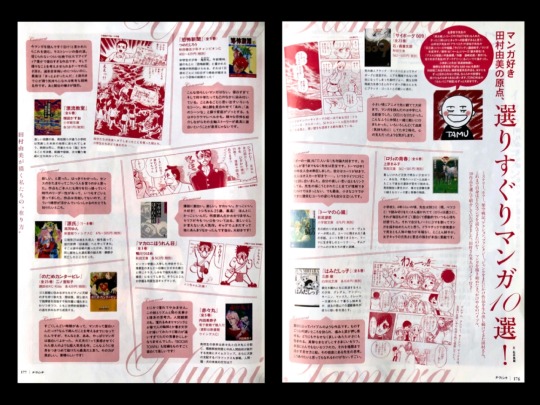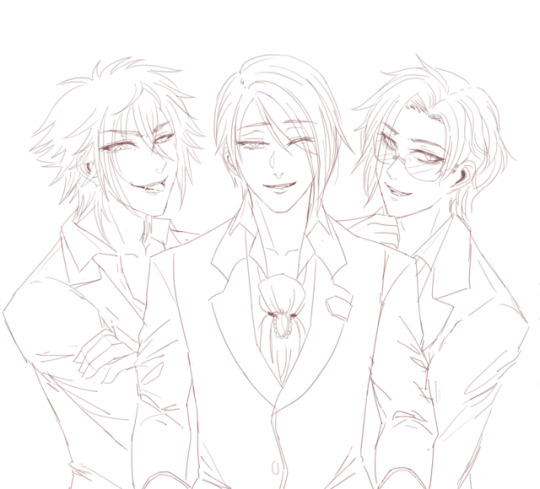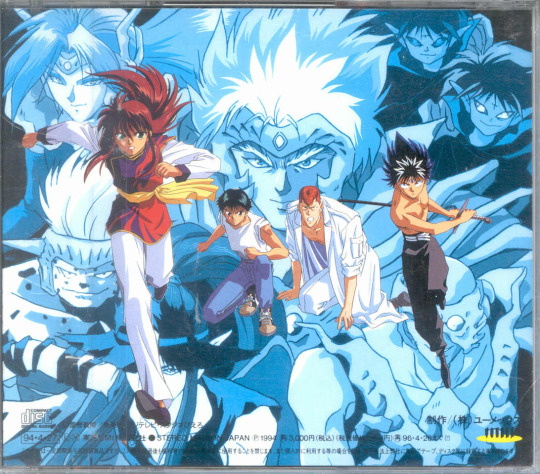#kazuo uehara
Text
Le Cigne | Kazuo Uehara
3 notes
·
View notes
Audio
Kazuo Uehara (上原和夫 ) - 春の歌 (Spring Song)
Get it here.
36 notes
·
View notes
Text
THE SNAKE GIRL AND THE SILVER-HAIRED WITCH (1968) – Episode 175 – Decades Of Horror: The Classic Era
“She’s a snake! My sister’s a snake!” Hmmm, that makes for an interesting family tree. Join this episode’s Grue-Crew – Chad Hunt, Daphne Monary-Ernsdorff, and Jeff Mohr along with guest host Bryan Clark – as they discuss The Snake Girl and the Silver-Haired Witch (1968, Hebi musume to hakuhatsuma) from the studio (Daiei) and director (Noriaki Yuasa) that brought you the Gamera films.
Decades of Horror: The Classic Era
Episode 175 – The Snake Girl and the Silver-Haired Witch (1968)
Join the Crew on the Gruesome Magazine YouTube channel!
Subscribe today! And click the alert to get notified of new content!
https://youtube.com/gruesomemagazine
ANNOUNCEMENT
Decades of Horror The Classic Era is partnering with THE CLASSIC SCI-FI MOVIE CHANNEL, THE CLASSIC HORROR MOVIE CHANNEL, and WICKED HORROR TV CHANNEL
Which all now include video episodes of The Classic Era!
Available on Roku, AppleTV, Amazon FireTV, AndroidTV, Online Website.
Across All OTT platforms, as well as mobile, tablet, and desktop.
https://classicscifichannel.com/; https://classichorrorchannel.com/; https://wickedhorrortv.com/
After years in an orphanage, a young girl named Sayuri is reunited with her estranged family. Her new home includes an amnesiac mother, a sister confined to the attic, and an absent father who experiments with poisonous snakes. Sayuri receives a less than cordial reception from her sister, Tamami. Still, when a witch attacks Sayuri, the two sisters must overlook their differences and join forces to battle her.
Directed by: Noriaki Yuasa
Writing Credits: Kimiyuki Hasegawa (writer); Kazuo Kozu (story “Hebimusune to Hakuhatsuki”); Kazuo Umezu (manga)
Music by: Shunsuke Kikuchi
Cinematography by: Akira Uehara
Selected Cast:
Yûko Hamada as Yuko Nanjo (as Yuko Hamada)
Sachiko Meguro as Shige Kito
Yachie Matsui as Sayuri Nanjo
Mayumi Takahashi as Tamami Nanjo
Sei Hiraizumi as Tatsuya Hayashi
Yoshirô Kitahara as Goro Nanjo
Kuniko Miyake as Sister Yamakawa – The Director of Orphan asylum
Osamu Maruyama as Doctor
Saburô Ishiguro as Teacher Sasaki
Tadashi Date as School Servant
Mariko Fukuhara as Doll
Kazuo Umezu as Taxi Driver
Join the Grue Crew and guest host Bryan Clark to explore Daphne’s choice for this episode, The Snake Girl and the Silver-Haired Witch (1968). This Japanese release involves venomous snakes, creepy spiders, a hideous witch, detachable limbs, a snake girl, and atmospheric visuals in a creepy “Scooby-doo” mystery. What will the Grue Crew think?
At the time of this writing, The Snake Girl and the Silver-Haired Witch is available for streaming from the Shudder, AMC+, and Arrow. The film is also available on physical media in the Blu-ray format from Arrow Video.
Gruesome Magazine’s Decades of Horror: The Classic Era records a new episode every two weeks. Up next in their very flexible schedule, as chosen by Chad is At Midnight I’ll Take Your Soul (1964). Yup. They’re going to Brazil to meet up with Zé do Caixão, also known as Coffin Joe!
[NOTE: The crew switched from Tonight I’ll Possess Your Corpse (1967) (as announced on the podcast) to At Midnight I’ll Take Your Corpse (1964).]
Please let them know how they’re doing! They want to hear from you – the coolest, grooviest fans: leave them a message or leave a comment on the Gruesome Magazine YouTube channel, the site, or email the Decades of Horror: The Classic Era podcast hosts at [email protected]
To each of you from each of them, “Thank you so much for watching and listening!”
Check out this episode!
0 notes
Text


Estudio No.4
Kazuo Shinohara, House in Uehara, Tokyo. 1976
1 note
·
View note
Photo

Katamari Fujiwara, Minoru Chiaki, Misa Uehara, and Toshiro Mifune in The Hidden Fortress (Akira Kurosawa, 1958)
Cast: Toshiro Mifune, Minoru Chiaki, Katamari Fujiwara, Misa Uehara, Susumu Fujita, Takashi Shimura, Eiko Miyoshi, Toshiko Higuchi. Screenplay: Akira Kurosawa, Ryuzo Kikushima, Hideo Oguni, Shinobu Hashimoto. Cinematography: Kazuo Yamazaki. Production design: Yoshiro Muraki. Film editing: Akira Kurosawa. Music: Masaru Sato.
There's a kind of boyish glee in even the title, The Hidden Fortress, promising secrets and surprises. This rousing, entertaining, and, yes, occasionally silly adventure story is remembered most today for inspiring George Lucas on the first Star Wars film, which is now clunkily known as Star Wars: Episode IV -- A New Hope (1977). From Akira Kurosawa's film Lucas borrowed the spunky rebel princess and the fretful, quarreling sidekicks, and renamed them Leia, C3PO, and R2D2, but more importantly he borrowed the insouciance, the delight in cinematic action. For once, Toshiro Mifune's bravado doesn't steal as many scenes as it usually does, thanks largely to Kurosawa's employment of the disgruntled foot-soldiers Tahei (Minoru Chiaki) and Matashichi (Katamari Fujiwara), whose cynicism, venality, and outright greed serve as foils for the heroics of Mifune's Gen. Rokurota. Like the first Star Wars, The Hidden Fortress never rises to the level of serious thought -- in fact, it's more straightforward fun than the Lucas oeuvre: There's no mysterious Force to suggest spiritual overtones and to weigh down the adventure with mythmaking.
0 notes
Text
Number 39 utopia

#NUMBER 39 UTOPIA FREE#
Pre-order buy pre-order buy you own this wishlist in wishlist go to album go to track go to album go to track NEUS, Ishigami says via email, stands for “Noise Electronic Unknown Sound.” True to its name the label, based in the Osaka area since its beginning, has made it a mission to find and release that which is unknown. After completing a course of study at the OAU and making a short trip to the famed electronic music studio INA-GRM in Paris, Ishigami founded the record label NEUS-318 in 1997. One of those students was Kazuya Ishigami, a composer and sound engineer born in 1972. In addition to his work as a musician and producer, Uehara was also a teacher and oversaw a number of exceptionally bright students at the Osaka University of Arts during his tenure. For a time, Uehara traveled and played around the world, performing at the Kitchen in New York and making contact with the giants of musique concrète in Paris. The two artists worked closely together: Yoshimura’s acclaimed 1986 album GREEN was not only produced by Uehara, it was also released by his label AIR Records Inc. Uehara’s name may ring a bell for enthusiasts of Hiroshi Yoshimura, whose environmental compositions have proved a test case for subtle music that, when rediscovered and spread online, can circumvent barriers of generation and taste. || Swords.This past May, Kazuo Uehara, a musician from Osaka, passed away. Standard equipment: Sword. || Swords. || Swords. Key: Number 39: Utopia || Number C39: Utopia Ray || Number C39: Utopia Ray V || Number C39: Utopia Ray Vcitory || Number 39: Utopia Beyond Range: Extended melee || Extended melee || Extended melee, several meters with Spinning Blades of Destruction || Extended melee || Extended melee Stamina: Nigh-limitless || Nigh-limitless || Nigh-limitless || Nigh-limitless || Nigh-limitless Intelligence: Unknown, likely at least very high || Likely at least very high || Likely at least very high || Likely at least very high || Likely at least very high Speed: MFTL (comparable to Number 9: Dyson Sphere) || MFTL (faster than before) || MFTL (faster than before) || MFTL (faster than before) || TransUniversalx (scaling from Number 96: Dark Mist who did this) is the ultimate Utopia.)ĭurability: Solar System || Solar System || At least Solar System || At least Solar System || Universe Physical Strength: Solar System || Solar System || At least Solar System || At least Solar System || Universe+Īttack Potency: Solar System (should be at least equal to Number 9: Dyson Sphere) || Solar System ( stronger than before) || At least Solar System ( stronger than before) || At least Solar System ( far stronger than before) || Universe+ ( defeated CXyz Barian Hope. Threat Level: Quasar- || Quasar- || Quasar- || Quasar- || CelestialĪll previous abilities to a higher degree, Resurrection, Afterimages He would come out from the Emperor's Key to assist Yuma whenever he was in troubleĭimensionality: 4D || 4D || 4D || 4D || 4D He was willing to protect Astral and was very concerned when Yuma was struggling to control "Number C32: Shark Drake Veiss" during Yuma's Duel with Shark. However, its power will corrupt any other Duelist who uses it as the way other "Number" cards do.
#NUMBER 39 UTOPIA FREE#
"Utopia" is the only "Number" that is cooperating with Yuma and Astral by its own free will, proven by the fact that it was the only one who did not side with Number 96. Utopia became Yuma's favorite "Number", using it in most of his Duels and refers to him more personally than most of his other monsters. During Yuma's Duel with Shark, the blank card took the form of "Utopia" based on Yuma's desires and became his ace monster. Number 39: Utopia Number 39's card was the sole "Number" to remain in Astral's possession after his memories were lost, a blank card at the time.

0 notes
Text
Storm Stereo 73: View From My Window: Kankyō Ongaku
Storm Stereo 73: View From My Window: Kankyō Ongaku
A journey into the soothing world of Japanese environmental and ambient music. It blossomed during the ’70s and ’80s thanks to corporate sponsorship of the arts. It would become a symbol of Japanese prosperity. For its creators, it would become a vessel for a deep artistic practice, rooted in a cosmic sonic philosophy. For its listeners today, it offers a window into a uniquely creative period in…

View On WordPress
#akira ito#ambient#erik satie#evironmental music#experimental#Hiroshi Yoshimura#inoyamaland#japan#japanese ambient#japanese minimalism#japanese music#kankyo ongaku#kazuo uehara#midori takada#minimal#music for spaces#music podcast#satoshi ashikawa#satsuki shibano#shiho yabuki#Storm Stereo#takashi kokubo#takashi toyoda#tomoyuki asakawa#toshiya sukegawa#yasuaki shimizu#yoshio ojima#yoshio suzuki
7 notes
·
View notes
Text
Top 10 Manga Picks: the Origins of Manga-Loving Yumi Tamura!
Loosely translated from the Da Vinci Magazine August 2020 issue.
"Tamura has been creating works that span mystery, horror, fictional warfare, action, and fantasy genres. What kind of manga has she been reading up to now? We asked her to introduce the 10 works that inspired her to start drawing manga, as well as what she considers her heart's bible. Includes comments from Tamura herself!"

Yumi Tamura's Comments:
1. Cyborg 009 by Shotaro Ishinomori
"When I was little, I watched the anime first and loved it, and then I read the manga around the time I was entering junior high school. I wanted to be 003 and go into battle with friends in the same way. I feel like it was my emotional support during the period of my 2nd year in junior high when I was having a hard time and ran away from it all."
2. Lolly no Seishun by Kimiko Uehara
"When I was in the 3rd or 4th grade of elementary school, Uehara drew a lot of one-shots in Betsucomi ('Lolly' was a weekly comic), and they were so interesting and moving every time that I was constantly in a state of emotion. I think because of that, I began drawing manga in my notebook, splitting up the pages into panels. Dramatic & rich with emotion, the depicted characters by Uehara, whether men or women, are full of charm & utterly brilliant. The energy and willpower of the female characters is really wonderful."
3. Thomas no Shinzou by Moto Hagio
"Of course I love 'Poe no Ichizoku' & '11-nin Iru!' too. Needless to say, Hagio is the greatest treasure. When I was in the 1st year of junior high, my friend & I were crazy about 'Thomas'. I liked Juri and my friend liked Oskar... we talked about going to Germany someday. It links together my own happy memories. I'm sure I didn't understand everything Hagio was trying to draw, but in the end, even now I cry at the image of Juri smiling faintly in a small panel."
4. Hamidashikko by Jun Mihara
"To me, this work is like the bible. It relentlessly strikes the deepest part of the heart and brings forth a flood of pain and tears. It wraps you up in a warmth that's helplessly miserable, sorrowful. Sincere gazes and intense dialogues. The power of the dialogues is truly unbelievable. The way the dialogues are presented along with the drawings make the best use of that power. Mihara's careful thoughts are at the root of all this. Even though I'm already this grateful, I will never get used to it. It's just amazing."
5. Kyoufu Shinbun by Jirou Tsunoda
"This is the most terrifying manga I've ever read. It's so captivating, & even decades later, it's still ingrained in me. There are various scenes that I'll recall whenever something happens. My younger sister & I would look at each other & go like ‘it's that’ or ‘that one scene, right?!’ & it would send shivers down our spines. We're already at a level of trauma. It's uncommon for a main story line to be most interesting while introducing all sorts of horrors."
6. Hyouryuu Kyoushitsu by Kazuo Umezu
"If I was told to read a manga now that would make me cry right away, then I would choose this one. Particularly the last scene of the mother crying. This work is unbelievably fierce, grand, rich in ideas, & just too fascinating. And the themes are so broad & deep that it makes you think about many things. It's a rare transcendental masterpiece that will, in the end, leave you feeling comforted & positive, thinking ‘it was a good ending,’ even though the journey is extremely scary & painful. Also, my contempt for Sekiya is strong.”
7. Macaroni Hourensou by Tsubame Kamogawa
"This is explosively entertaining. Fun. Cute. Cool. I love it! 25-year old Toshi-chan is the best! He's so cool. I don't know how many times I've read this. I still say the lines out loud even now. This is a very popular work that I can only describe as fun. There are not many other gag manga that make me burst out laughing quite like this one. I love it!”
8. Akaaka Maru by Minako Uchida
"I just can't stop admiring this work in general. The drawings, the rhythm, the stunning midpoint [?], the ability to think in a scientific way. And the proficiency of observing people. I admired it so much that I tried drawing contours of people & handwriting with permanent markers & brushes, but my drawing skills were so different that I ended up with nothing but doodles. ‘BOOMTOWN’ & the short stories are also very interesting & fun!”
9. Genji by Yun Kouga
"Innovative, I thought. I could clearly understand it. Kouga seems to be the kind of person who has a lot of sense. I've always thought it was amazing how her work & she herself had leadership qualities of the time to pull others along. I would very much love to know what kind of ideas Kouga has in mind for the rest of this work, since it hasn't been completed yet.”
10. Nodame Cantabile by Tomoko Ninomiya
"There was a period when I was having a very tough time, & it got to the point where I was having unhealthy thoughts like, ‘Is manga even enjoyable?’ But then this work came along & I was like ‘Aah, manga is fun after all! Thank goodness, I'm okay!’ So, this is a super popular & famous work to which I owe a debt of gratitude for making me realize & genuinely feel this way. I think it would be the greatest if I could portray the world in a similar way with such thoroughness. I envy that power of Ninomiya's! It's magnificent!”
Additional side comment from Tamura (in the speech bubble):
“I wanted to include the Bijohime series (Hana no Bijohime) & PARTNER by Tomoko Naka too! (I think it's obvious that these have an influence on my characters.) Other works that also left a strong impact on me are Ryouko Yamagishi's Arabesque; Yuko Kishi's Tamasaburou series and short stories; Rising! (Saeko Himuro/Author, Kazuko Fujita/Artist); the Palm series (Yasei Kemonogi); Astro Kyuudan (Shirou Toozaki/Author, Norihiro Nakajima/Artist); & Dark Green by Junko Sasaki. Makoto Kobayashi's Judo-bu Monogatari & Nanae Haruno's PaPa told me are also excellent! There’re also many other works that I'll never forget, such as those by Shinji Wada & Udou Shinohara, which have all influenced me in some way. I've always loved TONO's Karubania Monogatari too.”

#Yumi Tamura#Tamura Yumi#Cyborg 009#Shotaro Ishinomori#Lolly no Seishun#Kimiko Uehara#Thomas no Shinzou#Moto Hagio#Hamidashikko#Jun Mihara#Kyoufu Shinbun#Jirou Tsunoda#Hyouryuu Kyoushitsu#Kazuo Umezu#Macaroni Hourensou#Tsubame Kamogawa#Akaaka Maru#Minako Uchida#Genji#Yun Kouga#Nodame Cantabile#Tomoko Ninomiya#Tomoko Naka#Ryouko Yamagishi#Yasei Kemonogi#Junko Sasaki#Makoto Kobayashi#Nanae Haruno#TONO#Shinji Wada
58 notes
·
View notes
Photo

de-stress doodle of the three dads from my story... except ikemen style... and they're vampires... lmao ITS FOR MY MENTAL HEALTH
#my art#my ocs#nonpareil#bowtocakemaster#subaru uehara#kazuo izumi#cain everett#today. i started off the day with a FREEWAY CLOSURE ON MY WAY TO WORK#and then i had to stay for 2 extra hours because my coworker couldnt make it for personal reasons#and i didnt eat thinking there would be food at home#and i was wrong#it was a day that desperately needed some self-indulgence lol#SO HERES SOME ANIME VAMPIRES.
7 notes
·
View notes
Photo

(1993) Kunio-kun no Dodgeball Zenin Shugo
pastiches for entire countries!
I love how every song that covers England manages to include references to the Beatles
my fav track is “Italy” tho
1 note
·
View note
Text

Yu Yu Hakusho: Poltergeist Report released on April 9, 1994.
Studio(s): Studio Pierrot and Movic
Director: Masakatsu Iijima
Producers: Haruo Sai, Ken Hagino, and Naoji Hōnokidani
Score: Yusuke Honma
I'll also list all of the artists involved in making the background art and the key animators! This movie looks incredible and directors tend to get a much bigger cut of the credit than they deserve.
Background Art: Emi Kitahara, Emiko Koizumi, Hideaki Kudo, Hirofumi Shiraishi, Hisae Saito, Hitoshi Nagasaki, Ikuko Ōoka, Kaoru Inoda, Kazuo Ebisawa, Kumiko Nagashima, Masumi Nishikawa, Mio Isshiki, Ryō Kōno, Sadayuki Arai, Sawako Takagi, Shigenori Takada, Shinichi Uehara, Shinobu Takahashi, Shuichi Hirose, Toshiharu Mizutani, Toshiyuki Yoshimura, Yasunari Usuda, Youngil Park, Yuka Kawashima, Yuka Okamoto, Yūko Kobayashi
Key Animation: Akihide Saitō, Chihiro Hayashi, Fuminori Kizaki, Hajime Kamegaki, Hideyuki Motohashi, Hikaru Takanashi, Hiroharu Nishida, Hiromi Niioka, Hirotaka Kinoshita, Hiroyuki Kanbe, Hiroyuki Okuno, Hisahito Natsume, Isao Sugimoto, Junichi Kigawa, Junko Abe, Kari Higuchi , Katsuichi Nakayama, Kazumi Minahiro, Kazuya Kuroda, Kazuyuki Ikai, Kazuyuki Kobayashi, Keiko Shimizu, Kenji Yamazaki, Kunihiko Ito, Mamoru Hosoda, Mamoru Kurosawa, Masahito Yamashita, Masaki Hosoyama, Masayuki Fujita, Mayumi Hirota, Munenori Nawa, Naoyuki Owada, Osamu Nabeshima, Satoru Iriyoshi, Satoshi Fukushima, Shinji Seya, Shinsaku Kōzuma, Shuji Kawakami, Shunji Suzuki, Susumu Yamaguchi, Tadakatsu Yoshida, Tadashi Abiru, Takashi Yamazaki, Takayuki Gorai, Takenori Mihara, Takuya Satō, Toyoaki Shiomi, Yasunari Nitta, Yoshiaki Tsubata, Yoshinori Kanada, Yoshiyuki Kishi, Yuichi Endo, Yuko Kusumoto
54 notes
·
View notes
Text
UTDP Season 2 Begins!

I’ve finally done it. All the sprites I need are at the ready to be used for some weird, funky interactions. Season 2 of UTDP is underway!
Now, I hope with this you’ll all be submitting your own requests, but since we’re about to enter the new series, it’s probably best if we go over the rules. Under the cut will be a list of rules that will apply when it comes to requesting certain interactions, and I’ve already got a list of requests at the ready, but I welcome more. If you want to request an interaction, then I recommend you go over these rules once more just to be sure.
I see you’re interested...? Well, just so you know, this will be a bit long on one part specifically.
Rule 1: Only the characters listed below will be allowed to be requested.
Not every Danganronpa character will allowed to be requested, particularly obscure one’s who don’t have a whole lot of character to them. However, my goal for this series is to include as many characters as possible. This is a long list too, so if there’s a certain character that you’re looking for, the list below is in Alphabetical Order by first name, so you can search for it that way. Not only that, but after each name will be the game/source material where that character is from, in case you don’t recognize some of them.
Also, in case it isn’t clear:
Trigger Happy Havoc is Danganronpa 1
Goodbye Despair is Danganronpa 2
Killing Harmony is V3
Ultra Despair Girls is...Ultra Despair Girls
The End of Hope’s Peak Academy is The Danganronpa 3 anime
Novel means they’re from Zero, or at least one of the light novels
and the rest are all fangames
Akane Owari (Goodbye Despair)
Akane Taira (Another Despair Academy)
Akeru Yozora (Blowback)
Angie Yonaga (Killing Harmony)
Aoi Asahina (Trigger Happy Havoc)
Ayame Hatano (Another Despair Academy)
Byakuya Togami (Trigger Happy Havoc)
Celestia Ludenburg (Trigger Happy Havoc)
Chiaki Nanami (Goodbye Despair)
Chihiro Fujisaki (Trigger Happy Havoc)
Chinami Hasami (Blowback)
Chisa Yukizome (The End of Hope’s Peak Academy)
Daisaku Bandai (The End of Hope’s Peak Academy)
Emma Magarobi (Another 2)
Fuyuhiko Kuzuryu (Goodbye Despair)
Gonta Gokuhara (Killing Harmony)
The Great Gozu (The End of Hope’s Peak Academy)
Gundham Tanaka (Goodbye Despair)
Hajime Hinata/Izuru Kamukura (Goodbye Despair)
Hajime Makunouchi (Another 2)
Haruhiko Kobashikawa (Another Despair Academy)
Hibiki Otonokoji (Another 2)
Hifumi Yamada (Trigger Happy Havoc)
Himiko Yumeno (Killing Harmony)
Hiyoko Saionji (Goodbye Despair)
Ibuki Mioda (Goodbye Despair)
Imposter Byakuya Togami (Goodbye Despair)
Iroha Nijue (Another 2)
Jataro Kemuri (Ultra Despair Girls)
Junko Enoshima (Trigger Happy Havoc)
Juzo Sakakura (The End of Hope’s Peak Academy)
Kaede Akamatsu (Killing Harmony)
Kaito Momota (Killing Harmony)
Kakeru Yamaguchi (Another Despair Academy)
Kana Ise (Blowback)
Kanade Otonokoji (Another 2)
Kanata Inori (Another Despair Academy)
Kanjiro Hayamoto (Blowback)
Kanon Nakajima (Novel)
Kazuichi Soda (Goodbye Despair)
Kazuo Tengan (The End of Hope’s Peak Academy)
K1-B0 (Killing Harmony)
Kinji Uehara (Another Despair Academy)
Kirumi Tojo (Killing Harmony)
Kiyoka Maki (Another Despair Academy)
Kiyotaka Ishimaru (Trigger Happy Havoc)
Kizuna Tomori (Another Despair Academy)
Koichi Kizakura (The End of Hope’s Peak Academy)
Kokichi Ouma (Killing Harmony)
Kokoro Mitsume (Another 2)
Komaru Naegi (Ultra Despair Girls)
Korekiyo Shinguji (Killing Harmony)
Kotoko Utsugi (Ultra Despair Girls)
Kyoko Kirigiri (Trigger Happy Havoc)
Kyosuke Munakata (The End of Hope’s Peak Academy)
Leon Kuwata (Trigger Happy Havoc)
Mahiru Koizumi (Goodbye Despair)
Mai Yurino (Blowback)
Maki Harukawa (Killing Harmony)
Makoto Naegi (Trigger Happy Havoc)
Masaru Daimon (Ultra Despair Girls)
Mikado Sannoji (Another 2)
Mikako Kurokawa (Another Despair Academy)
Mikan Tsumiki (Goodbye Despair)
Mikihiko Koyasunaga (Blowback)
Misako Rokuhana (Blowback)
Mitsuhiro Higa (Another Despair Academy)
Miu Iruma (Killing Harmony)
Monaca Towa (Ultra Despair Girls)
Mondo Owada (Trigger Happy Havoc)
Monokuma (Trigger Happy Havoc)
Monocrow (Another 2)
Monodam (Killing Harmony)
Monokid (Killing Harmony)
Monophanie (Killing Harmony)
Monosuke (Killing Harmony)
Monotaro (Killing Harmony)
Monomi/Usami (Goodbye Despair)
Mukuro Ikusaba (Trigger Happy Havoc)
Nagisa Shingetsu (Ultra Despair Girls)
Nagito Komaeda (Goodbye Despair)
Natsumi Kuzuryu (The End of Hope’s Peak Academy)
Nekomaru Nidai (Goodbye Despair)
Nikei Yomiuri (Another 2)
Peko Pekoyama (Goodbye Despair)
Rantaro Amami (Killing Harmony)
Rei Mekaru (Another Despair Academy)
Ruruka Ando (The End of Hope’s Peak Academy)
Ryo Koumori (Blowback)
Ryoma Hoshi (Killing Harmony)
Ryota Mitarai (The End of Hope’s Peak Academy)
Ryouko Otanashi (Novel)
Sakura Ogami (Trigger Happy Havoc)
Sato/Sato Hiyori (The End of Hope’s Peak Academy)
Satsuki Iranami (Another Despair Academy)
Sayaka Maizono (Trigger Happy Havoc)
Seiko Kimura (The End of Hope’s Peak Academy)
Seina Datenashi (Blowback)
Setsuka Chiebukuro (Another 2)
Shinji Kasai (Another 2)
Shobai Hashimoto (Another 2)
Shozo Asayoru (Blowback)
Shuichi Saihara (Killing Harmony)
Sonia Nevermind (Goodbye Despair)
Sonosuke Izayoi (The End of Hope’s Peak Academy)
Sora (Another 2)
Tato Shimagami (Blowback)
Tenko Chabashira (Killing Harmony)
Teruteru Hanamura (Goodbye Despair)
Teruya Otori (Another Despair Academy)
Toko Fukawa/Genocide Jack (Trigger Happy Havoc)
Torae Akatsubaki (Blowback)
Toshiro Takahara (Blowback)
Tsumugi Shirogane (Killing Harmony)
Tsurugi Kinjo (Another Despair Academy)
Yamato Kisaragi (Another Despair Academy)
Yasuhiro Hagakure (Trigger Happy Havoc)
Yasuke Matsuda (Novel)
Yoruko Kabuya (Another 2)
Yosaku Fujita (Blowback)
Yukari Koime (Blowback)
Yuki Maeda/Utsuro (Another Despair Academy)
Yuri Kagarin (Another 2)
Rule 2: Only 3 characters are allowed per interaction.
In order to replicate the game to the best of it’s ability, each interaction may only allow 2 or 3 characters and no more. As of such, I hope the requests will abide by this rule, since I’ve gotten requests before involving way more than three.
Rule 3: Credit for all fan-made sprites go to their original owners.
If you want to use the sprites I use for your own projects, then I have no problems with that personally, but just to be clear, most of these sprites aren’t mine. If their not from the original game, then they’re fan-creations and the rights go to their original creators. A new page has opened up on my Tumblr where all the sprites original sources are located, and you can go and check them out there.
Rule 4: The New System.
As I’ve made clear before, not all interactions are requests. I have a long list of interactions that I pre-wrote for this series a while ago, and I intend to get all of those done. As of such I will be going by a new system. I’ll be uploading two interactions per day from now on. One will be a request, and the other will be one of my writes. I’ve delayed people enough, so that is why I am going to be going with this system so I can stay on track.
Rule 5: Reddit Requests will no longer be accepted.
As unfortunate as it may seem to some, I will no longer be accepting requests delivered to me through Reddit. Only asks that are sent directly through Tumblr will be allowed now, but I WILL finish all requests on Reddit before I end it. The ban is in place as of now though, so if you request through the Reddit link, I will not answer your request.
Rule 6: Additional Rules may be added as this series goes on depending on feedback.
This isn’t put in place because I don’t trust people, but say for example there’s a character from the list that isn’t on it that you REALLY think deserves to be on it, then let me know, and I will consider it. Same goes for any other aspect of this rule list.
Well, that’s all for now. Now that you know how things work, let’s get into some Talent Development!
#danganronpa#danganronpa 1#dr1#danganronpa 2#dr2#danganronpa v3#drv3#danganronpa 3#dr3#danganronpa another episode#danganronpa ultra despair girls#ultra despair girls#drae#danganronpa another despair academy#dra#danganronpa another 2#sdra2#danganronpa blowback#drb#ultimate talent development plan
20 notes
·
View notes
Photo










Kazuo Shinohara
1976, House In Uehara
90 notes
·
View notes
Photo

(vía 1976 – House in Uehara – Kazuo Shinohara – architecture tokyo)
33 notes
·
View notes
Photo








Kazuo Shinohara, House in Uehara, 1976
(architecture tokyo)
31 notes
·
View notes